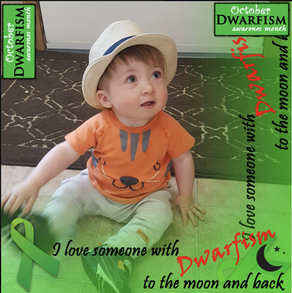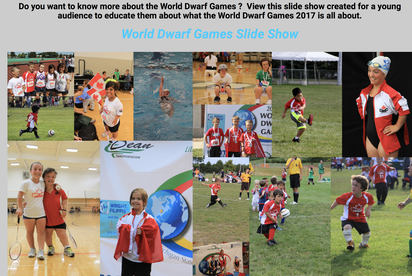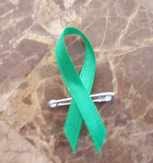
Rupert had a rough start in life. He spent the first 3 months of his life in hospital. Why? Because he was born just a little bit different than other babies.

Despite no longer having any medical complications, Rupert will still have to face a society that isn't built for him, and, even scarier for me as a parent, a society that doesn't understand that he is just a normal kid.
If you've read this much, you are already contributing to Dwarfism Awareness Day. There is nothing you have to do. There is nothing to you need to give money to. There is nothing you have to subscribe or run a marathon for. You have participated simply by acknowledging that dwarfism is more common than you might think, and that, really, aside from being a bit smaller, these people are no different than you are. Sometimes there are medical complications, but average height people often use medical support too.

World Dwarf Games

(from https://dwarfismawarenessaustralia.com)
Did you know that there is over 200 different types of dwarfism?
You cannot catch dwarfism. It cannot be passed onto someone else like a flu. It is a hereditary and non hereditary condition which can only be passed on through carriers of the mutated gene or developed spontaneously in utero by a genetic mutation of a gene.
Dwarfism refers to a group of conditions characterised by shorter than normal skeletal growth. This shortness can be manifested in the arms and legs or trunk.
Achondroplasia is the most common type of short-limb dwarfism, occurring in around one in 25,000 children in Australia with both sexes at equal risk. This type of skeletal dysplasia (abnormal skeletal growth) is usually diagnosed at birth.
The majority of children born with the disorder have average-sized parents. The child may experience delay developing motor skills, such as controlling the movements of the head, but intellectual development is normal in children with Achondroplasia. The average final height for a person with this condition is 130cm for men and 125cm for women. Short-statured people lead normal, fulfilled lives. Achieving higher levels of education and career and personal ambitions is not limited by stature.
In humans, dwarfism is sometimes defined as an adult height of less than 4 feet 10 inches (58 in; 147 cm). Dwarfism can be caused from over 200 distinct medical conditions, such that the symptoms and characteristics of individuals with dwarfism vary greatly. Disproportionate dwarfism is characterized by one or more body parts being relatively large or small in comparison to those of an average-sized adult, with growth variations in specific areas being apparent. In cases of proportionate dwarfism, the body appears normally proportioned, but is unusually small.
There is no single treatment for dwarfism. Individual differences, such as bone growth disorders, sometimes can be treated through surgery, some hormone disorders can be treated through medication, and by hormone replacement therapy; this treatment must be done before the child’s growth plates fuse. Individual accommodations, such as specialized furniture, are often used by people with dwarfism.
For people, in addition to the medical aspect of the condition, there are social and sociological aspects as well. For a person with dwarfism, heightism can lead to ridicule in childhood and discrimination in adulthood.
Hypotonia, or low muscle tone, is common in dwarfs, but intelligence and lifespan are usually normal. Defining dwarfism by height alone is problematic because short stature in itself is not a disorder. For example, pygmies have adult male heights of less than 150 cm (4 feet 11 inches) on average.
The word “midget” is considered offensive. It is considered most offensive when misused to describe those with dwarfism. Acceptable words to use are dwarf, little person, person with dwarfism, short stature. But most would like to be called by their name rather than their condition.

 RSS Feed
RSS Feed